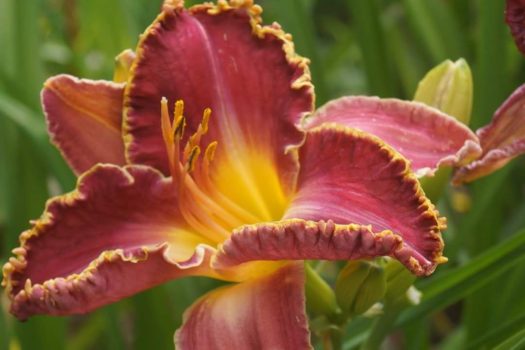It’s Good for Your Plants Dividing perennials is an easy, inexpensive, reliable way to propagate you favorite plants. In fact, lots of varieties of perennials benefit from division, resulting in several young, actively growing and blooming plants out of an overgrown clump. It’s a good idea to spend a little time before you start the task and decide where the divisions are going. Take advantage of the opportunity to amend the soil before you plant you divisions. Can any perennial …
Dividing Bearded Iris
Bearded iris can be divided any time after the last spring frost. However, many iris growers believe the optimal time is 6-8 weeks after blooming. August is a good time to begin. This gives plants time to root well before winter. Extremely hot days (90 +) should be avoided when transplanting. Plant division every 3 to 4 years is beneficial for maximum bloom. With a garden fork lift the entire plant clump and shake or rinse excess soil from roots. …
Dividing Hostas
Division should be done when shoots have quit growing at the center of a mature clump. This will greatly improve the plant’s appearance. Lift the entire clump and rinse excess soil from the roots. This will make it easier to see where each cut should be made. Use a sharp knife to make the divisions. Each division should have at least 2-3 eyes. Spring is the easiest time to divide Hostas because new shoots are only a few inches high and …
Dividing Daylilies
Plants usually bloom better if you divide clumps every 3 to 4 years. Lift the entire clump using a garden fork in early spring through mid-fall. The best time is after they have finished flowering. Start by placing the fork in the ground 6 to 12 inches away from the base of the plant. Gently push down on the handle to pry the clump up and out of the soil. Work around the root ball repeating this process until the …

